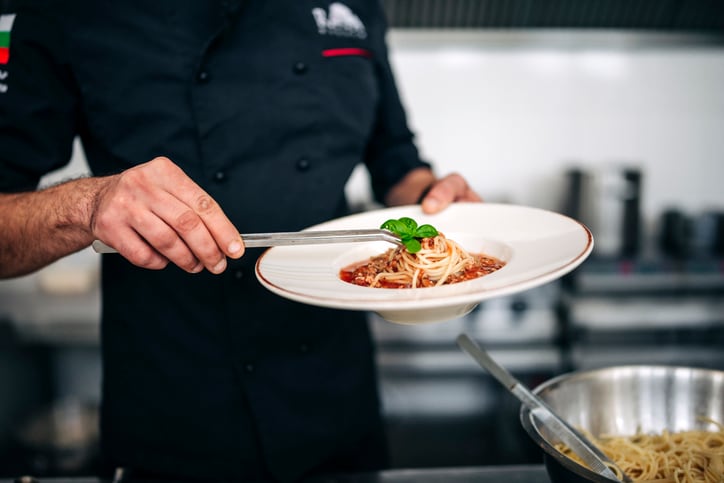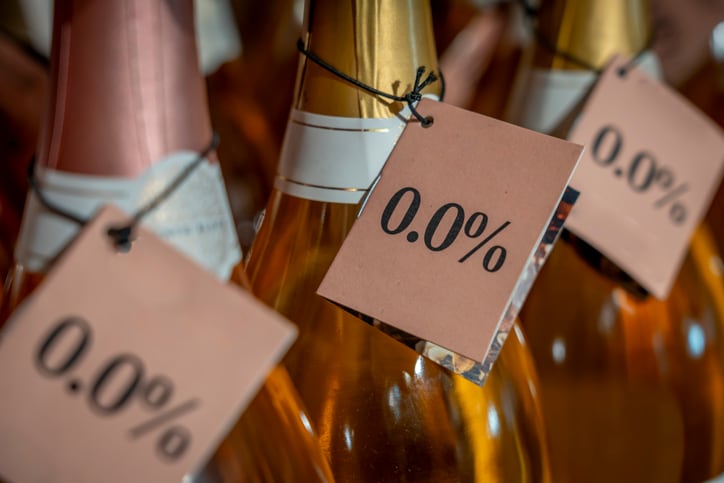Pasta has long been a budget-friendly staple in many US households, but over the past year as inflation has continued to creep up and consumer sentiment down, sales of spaghetti, penne and the plethora of other pasta have ticked up – fueled in part by a nearly 11% bump in social conversations and 36% increase on restaurant menus in the past year, according to Tastewise.
Statista estimates pasta sales in the US will reach about $9.73 billion in 2025, which is about 5.2% higher than in 2024, and predicts the market will grow even faster in the coming years at a compound annual growth rate of 7.96% through 2030. This estimate may be on the low end, with imarc predicting the US pasta market will grow at a compound annual growth rate of 8.3% through 2033 – albeit off a smaller estimated base of $6.2 billion. Volume, however, is not expected to grow as fast with a projection of 4.9% in 2026 – a discrepancy shared by many food and beverage categories as higher prices force consumers to buy less.
In this episode of FoodNavigator-USA’s Soup-To-Nuts podcast, a trio of pasta importers at the Summer Fancy Food Show in New York City reveal what is driving consumer interest in pasta and their strategies for addressing category challenges, such as the lingering demonization of carbs and a rising demand for nutrient-density. They also reveal how premiumization, unique shapes and “sauceability” are influencing innovation and long-term sales.
Explore past episodes of Soup-To-Nuts podcast
Never miss an episode of FoodNavigator-USA’s Soup-To-Nuts podcast - subscribe today.
Catch up on past episodes of Soup-To-Nuts:
Beyond sober-curious: How long is the runway for non-alcoholic beverages? – While sales of non-alcoholic beverages are growing double-digits year-over-year, new research from NielsenIQ shows most NA consumers still buy alcohol – upending assumptions and forcing brands to rethink their outreach strategy
Conscientious chocolatier Alter Eco’s secret to sustainability success: ‘Show your receipts’ – At a time when many CPG companies are pulling back on sustainability initiatives – or at le ast not talking about them as vociferously as they were five years ago – premium chocolate maker Alter Eco Foods is proudly pushing forward and placing its environmental efforts center stage in consumer communications.
From microalgae to macro impact: Arborea harnesses sunlight to create ‘food without the footprint’ – Climate-tech startup Arborea’s proprietary BioSolar Leaf system promises to produce nutrient-dense proteins and superfoods by ‘industrializing photosynthesis’ and using a fraction of the land, water and carbon footprint of conventional agriculture.
The war on sugar: Are better-for-you options unfairly caught in the crosshairs? - Republican leaders are amping up the war on sugar by taking aim at categories historically laden with the sweet stuff, but are better-for-you products accidentally getting caught in the crossfire?
Prop 65 pushback: Landmark ruling curbs cancer warnings for dietary acrylamide – A landmark federal court decision to block mandatory cancer warnings for di etary acrylamide under California’s controversial Prop 65 is a major win for food manufacturers – and could offer protective precedence for compelling warnings based on shaky science in violation of First Amendment rights
The pasta evolution: From a commodity to a specialty
Pasta has not always been as popular as it is today – in fact sales were down notably in the mid-2010s as popular books like Grain Brain by David Perlmutter, which was originally published in 2013, and diets like South Beach and Paleo demonized carbs as destroying the brain and contributing to weight gain. This was also when gluten-free started to gain traction, which cast additional shade on conventional wheat pasta.
The negative stigma and fear created by these and other social conversations happening in the early 2010s led to a slight decline in pasta sales in 2015 to 2016 and relatively stagnate sales from 2016 to 2019.
But as Flavia Garzia, who heads new business development in the USA for Garofalo Pasta, explains manufacturers responded to this downturn with a flurry of innovation that is bringing consumers back to the segment and increasingly elevating pasta beyond commodity.
She recalled 13 years ago when she moved to the US from Italy that pasta here was more of a side dish and often an afterthought, but slowly Americans are discovering “not every pasta is the same.”
She explained the “whole wheat revolution” followed by the “gluten-free revolution” gave some consumers whiplash and created confusion about whether grain and carbs were good or bad. But it also showed them how they could love pasta – if they found the one that was right for them.
Garofalo gambles on ‘Real Italian Carbs’ campaign
To drive home the point that carbs can be good, Garofalo revamped its packaging in the US with an in-your-face claim of “Real Italian Carbs” in large red letters that underscore the brand’s dedication to making pasta the traditional Italian way with 100% premium durum wheat semolina that is never bleached or enriched.
“What we really want to tell consumers is that we know that everybody is trying to limit their carb intake,” but when they choose to eat carbs “choose the good carbs,” meaning pasta made with the same varietals and produced with the same care as the pasta Italians each, she said.
She explained that Americans often visit Italy and notice how the pasta and bread there does not cause bloating or hurt their stomach like the options in the US. With Garofalo they can have “real Italian carbs” in the US.
In addition to the new look, Garofalo is introducing multiple new products that were inspired by consumer behavior during the COVID-19 pandemic, during which shopper surged back to pasta for its comfort, convenience and versatility. Now, Garzia said, the company is debuting a new high protein pasta in the fall and a line of high-quality frozen pasta that can be prepared in five minutes in a skillet for a restaurant experience at home.
Can premium pasta win over Americans in today’s tough economy?
Joining Garofalo in the quest to elevate pasta at home is a proliferation of super-premium brands, including Tirrena and Rustichella d’Abruzzo, which import high-end offerings to the US from Italy and are helping consumers see pasta as more than commodity.
Matteo Frescobaldi, the sales coordinator and marketing manager for Laudemio & Tirrena, explains what sets Tirrena apart is the unique grain varietals it uses and its careful production method.
“More and more people are looking for high quality pastas that are usually artisanal made,” and which offers a better nutritional profile, he said.
“What really makes our pasta unique is the fact that we cultivate the wheat,” which is “very good in terms of nutritional value, but also in terms of taste and aroma,” he said.
He explained that when a consumer opens a box of Tirrena pasta they will smell notes of licorice, coffee and hazelnut, and the bit is chewier and longer-lasting than other pastas.
To help convey the higher-quality of Tirrena’s pasta on shelf, the brand uses premium packaging that is sky blue and embossed with the shape of wheat fields seen from above and the brand name is in a bronze color that reflects the pasta inside the box. At $9 to $14 per 500 gram pack, the company’s selection is on the higher end of the price range but that is not a deterrent for the target consumer.
“The customers that enjoy the flavor are interested in the finer brand and quality and they are okay with spending that amount,” he said.
The appeal of artisanal
What sets Rustichella d’Abruzzo’s pasta apart from the pack, according to the group strategy manager Piero Peduzzi, is its texture, which is a bit rough and therefore “attracts the sauce perfectly.”
He explained that artisanal pasta, like his family makes, differs from “industrial pasta” in three distinct ways:
- Bronze Die Cut – Artisanal pasta has a rougher texture because it is extruded through perforated bronze metal plates rather than plastic plates used by less expensive pastas which also are smoother. Because bronze is an elastic material, Peduzzi explains that the plates must be replaced every few months, which is expensive and adds to the end cost of the pasta.
- Premium ingredients – Artisanal pasta also uses the “best raw material available on the market,” according to Peduzzi. This typically means locally sourced grains with high protein content.
- A long drying pasta – Peduzzi said the pasta his family makes dries slowly for 45 hours at about 90-100 degree Fahrenheit.
Rustichella d’Abruzzo’s pasta also stands out on shelf because it offers a wide range of shapes so consumers can find the perfect fit for any recipe.
Peduzzi explains that each shape was created to pair perfectly with different sauces and toppings, which further elevates the eating experience.
The very attributes that are helping to elevate the pasta segment are further fractioning the category and complicating competition. But, this could be a case of a rising tide lifting all boats if premium pasta and reinvented everyday pastas continue to attract new consumers to the category and expand the overall market.




